Answer these simple questions and we will find you the BEST prices
Which type of solar quotes do you need?
It only takes 30 seconds
100% free with no obligation

Get Free quotes from insulation specialists near you

Save money by comparing quotes and choosing the most competitive offer

The service is 100% free and with no obligation
- GreenMatch
- Insulation
- Conservatory Insulation
Conservatory Insulation: A Complete Guide (2025)

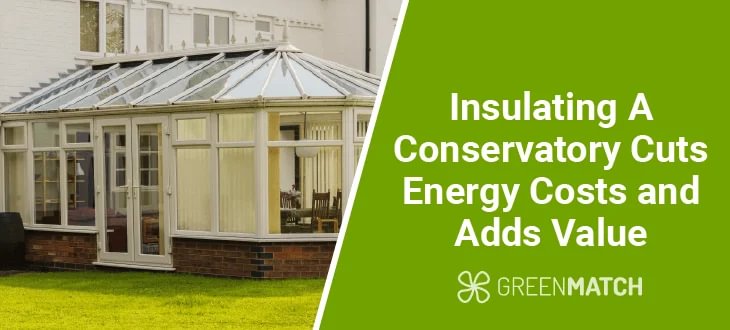
- Insulating a conservatory boosts comfort, energy efficiency, and property value, while offering cost savings and making it usable year-round.
- There are various ways to insulate a conservatory, including roof, wall, window, and floor insulation.
- The cost of insulating a conservatory widely ranges from £800 to £100, depending on its size, chosen materials, insulation method and location.
Insulating a conservatory offers several key benefits. It enhances energy efficiency by reducing heat loss, helping to keep the space warm in winter and cool in summer. This leads to lower energy bills, as your heating and cooling systems work less to maintain a comfortable temperature.
Insulation also improves comfort, creating a more pleasant environment year-round by eliminating drafts and reducing condensation. It can increase the overall value of your property, making it a more attractive investment.
In this comprehensive guide, we’ll cover various methods for insulating your conservatory, including costs, DIY options, and more. Keep reading to find all the essential information you need before installing insulation.
Start transforming your conservatory today—request multiple quotes from local insulation experts and make your space comfortable year-round. Simply fill out our 30-second form. Click below to begin!
- Describe your needs
- Get free quotes
- Choose the best offer
It only takes 30 seconds



Benefits of conservatory insulation

Insulating a conservatory offers several significant benefits, particularly in terms of sustainability, cost savings, and enhanced comfort. Below is an overview of the advantages.
- Enhanced energy efficiency: Insulating a conservatory is crucial to creating an energy-efficient home. By improving its thermal performance, you reduce the need for additional heating in winter and cooling in summer. This reduction in energy use directly contributes to lower carbon emissions, aligning with environmental sustainability goals.
- Cost savings: Properly insulating a conservatory can substantially save energy bills. A well-insulated conservatory retains heat during the winter months and keeps it cooler in summer, reducing the need for artificial heating and cooling. For instance, replacing an old polycarbonate or glass roof with a solid, insulated roof can save homeowners up to £200 annually on energy bills.
- Comfort: Proper home insulation ensures your conservatory is usable year-round. Without insulation, conservatories often become too hot in summer and too cold in winter. Installing features like insulated conservatory wall panels and opting for the best insulation for conservatory roofs ensures a consistent, comfortable temperature.
- Increased property value: A well-insulated conservatory is considered a valuable home extension, contributing to its market appeal and functionality.
- Noise reduction: High-quality insulation materials can significantly reduce external noise, creating a quieter and more serene indoor environment. This is particularly beneficial for conservatories in noisy areas or close to busy streets.
- Longevity and low maintenance: Modern insulation solutions, such as polycarbonate conservatory roof insulation and other advanced materials, are designed to be durable and require minimal maintenance. This ensures that the insulation benefits are long-lasting, providing homeowners with a sustainable and cost-effective solution over time.
How to insulate a conservatory
There are several ways to enhance the thermal efficiency of your conservatory, including insulating the roof, floors, and walls, either individually or together. Let’s explore these options.
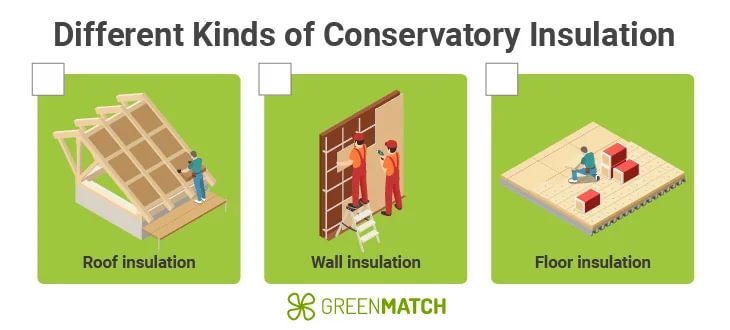
Insulating a conservatory can significantly enhance its comfort and energy efficiency, making it a usable space year-round. Here are several methods to insulate a conservatory, considering budget, DIY skills, and environmental impact.
Conservatory roof insulation
Here’s a summary of various effective conservatory roof insulation options, along with their costs and performance.
1. Internal conservatory roof insulation: This method involves creating a new insulated ceiling underneath the existing roof. It uses materials like conservatory insulation panels, which improve thermal efficiency by preventing heat loss in winter and reducing heat gain in summer. This effective and moderately priced method provides good insulation without replacing the existing roof.
2. Replacing the conservatory roof: Installing a thicker polycarbonate roof insulation is a cost-effective way to insulate your conservatory. While it is cheaper than other methods, it offers moderate insulation. Polycarbonate roofs are easy to shape and install but may not provide the best thermal efficiency, especially in extreme weather conditions.
3. Replacing the existing roof with a solid roof: Changing the existing roof with a solid, insulated tiled roof offers excellent thermal insulation, allowing year-round conservatory use. Although this method is more expensive and typically requires professional installation, it provides the highest level of thermal efficiency and can increase property value.
4. Foil insulation: Foil insulation, such as EcoQuilt Expert and YBS SuperQuilt, involves adding reflective layers that bounce heat back into the room during winter and reflect heat out during summer. This method is inexpensive, easy to install, and highly effective at maintaining a stable temperature. Due to minimal material usage, it is also an eco-friendly option.
5. Adding insulation to glass roof: Glass roofs, combined with internal insulation, enhance thermal efficiency while allowing natural light to flood the conservatory. Though more expensive than polycarbonate, glass roofs provide a pleasant aesthetic and better insulation, making them a durable choice for maintaining a bright, airy space.
6. Solar control films: Solar control films can be applied to the conservatory windows to limit sunlight and reduce heat gain in summer. This method is affordable and maintains garden views, but it is less effective in winter and may require frequent replacement.
7. Thermal blinds and roof drapes: Installing thermal blinds or roof drapes is a budget-friendly DIY solution. These options provide some insulation by capturing heat in pockets, though they are more effective at blocking heat in summer than retaining it in winter. They can also obstruct views, which may be a drawback for some homeowners.
Conservatory floor insulation
There are different methods for insulating conservatory floors, depending on whether they are slab or raised. In this section, we’ll explore how to effectively insulate each type.
Slab floors
When insulating slab floors several materials can be used, these include insulation boards, insulated screed, and reflective foil.

Insulation boards: PIR or polystyrene boards can be laid directly on a concrete slab before the final flooring. These boards provide excellent thermal benefits, preventing heat loss. Installation is straightforward but may benefit from professional assistance for optimal results.
Insulated screed: By mixing insulating materials into the concrete screed applied over the slab, this method combines structure and insulation. It creates a durable heat barrier but typically requires professional installation due to its technical nature.
Reflective foil insulation: Laid directly on the slab before the final flooring, reflective foil insulation reflects heat into the conservatory, improving thermal efficiency. It is a cost-effective and easy-to-install option, ideal for DIY projects.
Raised floors
When insulating raised floors underfloor insulation and insulated floor panels can be used, let's look at each type.
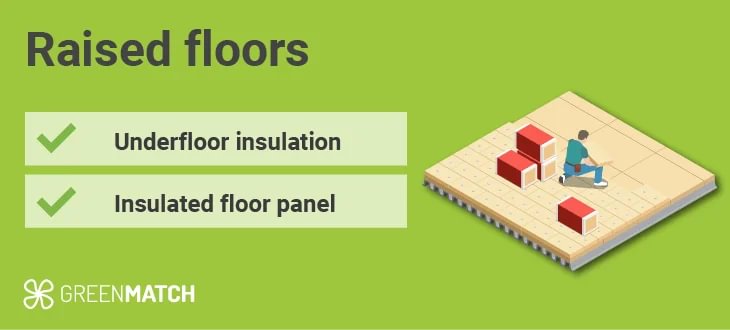
Underfloor insulation: For floors that have already been raised, installing insulation beneath the floorboards is effective. Materials such as mineral wool, fibreglass, or rigid foam boards can fill the gaps between the joists, preventing heat from escaping through the floor. This method is relatively straightforward to implement.
Insulated floor panels: Insulated floor panels can replace existing floorboards or be laid on top of them. These panels provide a continuous layer of insulation. They are easy to install and suitable for DIY projects, making them popular for conservatory floor insulation.
Adding a damp-proof membrane before insulation is essential to prevent moisture damage and ensure longevity. Choosing the right floor covering, like thick carpets or rugs, can also improve insulation and comfort.
Conservatory wall insulation
Insulating the walls of a conservatory is essential for improving energy efficiency and comfort throughout the year. Here are some effective methods for conservatory wall insulation:
Internal wall insulation
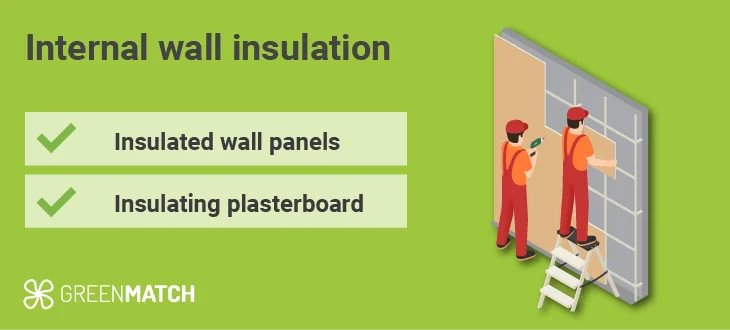
Insulated conservatory wall panels: These panels can be attached to the interior walls of the conservatory. They are highly effective in preventing heat loss and can be easily installed. These panels not only improve thermal efficiency but also enhance the conservatory's aesthetic appeal. This method suits a DIY approach, making it both cost-effective and practical.
Insulating plasterboard: Insulating plasterboard combines insulation material with plasterboard, offering a streamlined method for improving thermal efficiency. This type of insulation is easy to install and provides a smooth finish that is ready for painting or wallpapering. It’s a practical solution for insulating without extensive construction work.
External wall insulation
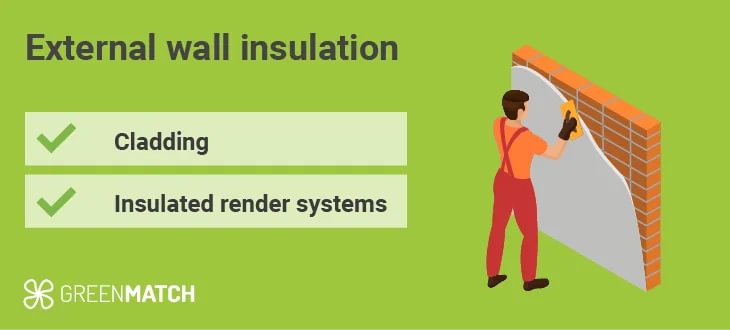
Cladding: External cladding involves adding a layer of insulation material on the outside of the conservatory walls, which is then covered with a protective and decorative cladding material. This method is highly effective but may require professional installation due to the complexity of the work. Cladding helps in improving both thermal efficiency and the appearance of the conservatory.
Insulated render systems: This involves applying a layer of insulation material to the exterior walls and covering them with render. This method effectively enhances the conservatory's thermal properties while providing a durable and weather-resistant finish. Due to the technical skills required, professional installation is recommended for this method.
Conservatory window insulation
Ensuring your conservatory is comfortable year-round involves effective window insulation. Here are some methods to improve the thermal efficiency of your conservatory windows:
1. Double glazing: Double glazing is one of the most effective ways to insulate conservatory windows. Modern double-glazed units trap air or gas between two panes of glass, significantly reducing heat loss and preventing cold air from entering. Although replacing all the glass in your conservatory can be expensive, it is a worthwhile investment for those planning to use the space frequently throughout the year.
2. Solar control film: Applying solar control film to the windows is a cost-effective method of limiting the amount of sunlight entering the conservatory. This film reflects up to 80% of the sun’s rays, helping to keep the conservatory cool in the summer. However, it is less effective in winter and may reduce window visibility.
3. Draught excluders: Draught excluders around the window frames can prevent cold air from seeping into the conservatory. This is a simple, cost-effective method of enhancing insulation and improving comfort without significant alterations.
4. Secondary glazing: Secondary glazing involves adding a secondary pane of glass or plastic inside the existing windows. This creates an additional barrier to heat loss and can be a more affordable alternative to replacing the entire window units with double glazing. Secondary glazing is particularly effective in older conservatories where replacing windows is not feasible.
Ready to insulate your conservatory? Look no further than GreenMatch UK. Fill out our 30-second form and receive up to 3 free quotes from trusted installers in your area. No hidden fees, no obligations. Click to begin!
- Describe your needs
- Get free quotes
- Choose the best offer
It only takes 30 seconds



Conservatory insulation cost
The cost of insulating a conservatory varies significantly, with prices starting around £800 and potentially reaching up to £10,000. The total cost will depend on the insulation method (roof, wall, or floor insulation), the size of the conservatory, the materials used, and the location.
Materials like polycarbonate, glass, and multi-foil vary in price, with larger conservatories requiring more materials and labor, thus increasing costs. The total expense will also depend on whether you hire a professional installer or choose a DIY approach.
Installation typically takes 1-2 days for roof insulation and can extend to several days for comprehensive insulation involving floors and walls.
Here’s a detailed cost comparison for various roof insulation methods:
| Conservatory size | Internal roof insulation | New timber roof insulation | Aluminium panel insulation |
|---|---|---|---|
| 3m x 2m | £2,000 - £4,500 | £5,000 - £8,000 | £750 - £1,000 |
| 3m x 3m | £2,000 - £4,500 | £5,000 - £8,000 | £1,000 - £1,100 |
| 4m x 4m | £3,000 - £3,750 | £5,000 - £8,000 | £2,000 - £2,750 |
| 6m x 4m | £4,750 - £5,000 | £5,000 - £8,000 | £2,750 - £3,000 |
| 8m x 6m | £6,000 - £7,000 | £5,000 - £8,000 | £3,750 - £4,000 |
Floor insulation: Depending on the size and type of insulation used, installing underfloor insulation can cost between £500 and £1,500.
Wall insulation: Depending on the wall area and insulation material, the cost of using insulated conservatory wall panels can range from £1,000 to £3,000.
Window insulation: Depending on the number and size of windows, upgrading to double glazing or adding thermal blinds/curtains can cost between £500 and £2,000.
The cost of insulating a conservatory can vary widely based on several factors. For optimal results, consider consulting with professionals to get accurate quotes and ensure high-quality installation.
DIY conservatory insulation options

Several conservatory insulation methods can be done as DIY projects:
- Reflective foil insulation: This is one of the simplest DIY methods. Simply attach reflective foil insulation to the conservatory roof or walls. It’s cost-effective and can be installed without professional help.
- Insulation boards: Polystyrene or PIR insulation boards can be cut to fit the conservatory roof and walls. These boards can be glued or secured in place and covered with plasterboard or other finishing materials.
- Thermal blinds or curtains: Installing thermal blinds or curtains on the conservatory’s windows is a simple DIY option.
- Floor Insulation: If your conservatory has a concrete floor, you can install insulation boards or reflective foil beneath flooring materials like laminate, vinyl, or carpets.
- Draught-proofing: Sealing gaps around windows, doors, and roof joints with weatherproofing strips or silicone sealants is an easy DIY method to prevent heat loss.
Each of these methods can be accomplished without the need for professional help, making them affordable and practical options for DIY enthusiasts. For more complex insulation jobs professional installation is advised for the best results.
What is the best insulation for a conservatory?
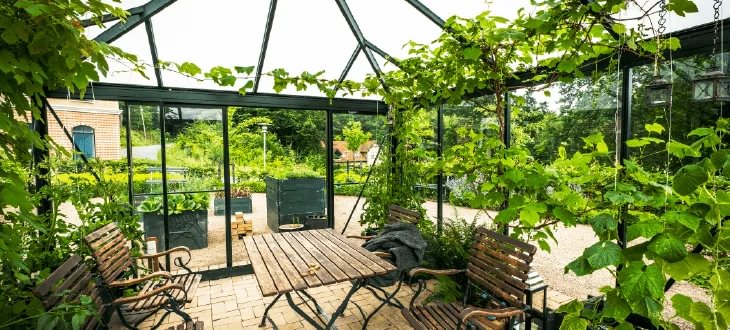
There isn’t one "best" insulation method for conservatories; the ideal choice depends on factors like budget, aesthetics, efficiency goals, and which areas of the conservatory need insulation. Below is a breakdown of the top options based on these considerations:
- Best for sustainability: Tiled roofs are highly effective and sustainable. They feature 185mm of insulation and a waterproof membrane, offering excellent thermal efficiency with a U-value of 0.15 W/m²K. These durable roofs can significantly reduce energy bills.
- Best affordable: The most budget-friendly option is to install a thicker polycarbonate roof or add an extra layer. While not as efficient as other methods, it is cost-effective and offers moderate insulation improvements.
- Best aesthetic option: Combining a glass roof with insulated panels, maintains natural light and thermal efficiency. This option balances aesthetics and functionality, keeping the conservatory bright and airy.
- Best insulation for a glass conservatory: Solar control film and thermal blinds are effective methods for a glass conservatory. The film reflects sunlight, reducing heat in summer, while thermal blinds retain heat in winter. These options are cost-effective and maintain aesthetic appeal.
Additional ways to make your conservatory warmer
To keep your conservatory warm without extensive renovations, consider these effective and practical methods:
- Tinted glass: Installing tinted glass can help retain heat during the colder months and reduce glare from the sun in the summer. This is an effective way to improve the thermal efficiency of your conservatory while maintaining its aesthetic appeal.
- Fitting curtains and blinds: Curtains and blinds are simple yet effective solutions for retaining heat. Thermal blinds and heavy curtains create an extra insulation layer, preventing heat loss and blocking drafts. They also allow you to adjust light and privacy levels.
- Multifoil and thermal wadding insulation: Using multifoil insulation or thermal wadding is a cost-effective DIY method. This involves layering insulation materials under the roof and securing them in place. While this can significantly reduce heat loss, it might not be as effective as professional insulation, but offers a good balance of cost and efficiency.
- Underfloor heating and rugs: Installing underfloor heating can provide a steady source of warmth from the ground up, keeping the conservatory cosy even in winter. If underfloor heating is not feasible, adding thick rugs or carpets can help insulate the floor and reduce heat loss.
When insulating your conservatory, comparing multiple quotes is essential to get the best value. Installers offer different prices, materials, and methods, so gathering quotes helps you make an informed choice.
For the best results, opt for professional installation to ensure proper efficiency and durability. Start today by finding local installers and requesting quotes to transform your conservatory into a warm, year-round space.
Ready to insulate your conservatory? Get started with GreenMatch UK! Fill out our quick 30-second form and receive up to 3 free quotes from trusted conservatory insulation installers near you. No hidden fees, no obligation. Click to begin!
- Describe your needs
- Get free quotes
- Choose the best offer
It only takes 30 seconds



FAQ
The cheapest way to insulate a conservatory is by using polycarbonate roof insulation. Adding a thicker polycarbonate layer or installing an additional layer underneath the existing roof is cost-effective and offers moderate insulation improvements. This method is budget-friendly and relatively easy to install compared to other options.
To make your conservatory warmer in the winter, consider installing thermal blinds or heavy curtains to reduce heat loss. Using multifoil or thermal wadding insulation on the roof can also help. Adding draught excluders around windows and doors, laying thick rugs or carpets on the floor, and installing an electric heater or underfloor heating can provide extra warmth.
Most heat loss in a conservatory occurs through the roof and windows, with the largest surface areas exposed to the elements. These areas are typically made from less insulating materials like glass or polycarbonate. Effectively insulating these parts can significantly reduce heat loss and improve overall warmth.
The best insulation for a conservatory depends on various factors. Tiled roofs are ideal for sustainable and effective insulation, offering excellent thermal efficiency and long-term sustainability. Polycarbonate roofs are the best budget-friendly option, providing moderate insulation improvements. Solar control film and thermal blinds are recommended for glass conservatories to manage heat and maintain aesthetics.
Yes, you can insulate your conservatory yourself using several DIY methods. For the roof, feasible techniques include installing reflective foil insulation, using insulation boards, and applying solar control film. Applying insulated plasterboard or thermal wallpaper can be effective for the walls.

Nicole Bea Kerr is a content writer for Greenmatch, leveraging her experience in B2B journalism and editing. She is interested in bringing more awareness to sustainability through informative narratives.
We strive to connect our customers with the right product and supplier. Would you like to be part of GreenMatch?

